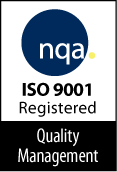Risk Based Monitoring (RBM) is a proactive, strategic approach to site monitoring and clinical data management that allocates resources based on need. It goes hand in hand with Quality by Design (QbD), a concept that has been embraced by nearly every industry to help improve processes and create quality products. It’s based on the idea that quality can be planned, and that many complications can be avoided if the planning stage is completed successfully.
QbD was recently adopted by the U.S. Food and Drug Administration to help support a RBM approach. It is a systematic way of building quality, chiefly by creating a thorough plan based on knowledge of the risks involved in your process and the best ways to manage or mitigate these risks. If you plan effectively and stick to your plan, you are more likely to achieve your objective. To adopt a Quality by Design approach in RBM, follow these four steps:
- Plan
The planning stage is pivotal to QbD. Planning involves proactively identifying critical data and the processes to be monitored throughout your clinical trial and performing a thorough risk assessment. Be sure to include all of your departments in the planning process. As part of the planning stage, you’ll develop monitoring plans, data management plans and communication plans that detail the steps you’ll take throughout the process, and in the event of any risks or complications. Risk identification—including protocol level risk, site level risk and data level risk—is a critical part of this step, because if you identify potential problems at the beginning of your trial, you can plan for them and act decisively should they arise.
- Perform
Next, you’ll perform the ongoing centralized and on-site monitoring activities you outlined in your planning stage to oversee the conduct of the trial. Be sure to set up every site for success and analyze individual risk factors throughout your process, as detailed in your plan. If you’ve made the right plan with input from the right people, you should get your desired output.
- Review
Continuously review your process and key risk factors at every stage of your clinical trial. Identify if there needs to be any changes to your current process. Remember, if you’ve created a thorough plan, you’ll know exactly what to look for and when and how to make a change. For example, a red flag may be a certain pattern in data errors, either across sites or in one particular site. In your planning stage, you’ll have defined risks and thresholds, so you’ll know what level of error you expected to see and when you need to take action.
- Adapt
Based on the results of the review and the performance of the sites, adjust the monitoring and/or data management and any study specific plans as required. As an example, let’s take a stratification error in which a patient gets allocated to a treatment plan that may not be the best option for him or her based on that strata. Your sites have been following certain guidelines on how to stratify. You’ll now want to assess those guidelines and consider if they are clear enough, and if your team has been properly trained. You’ll also make changes as needed, based on your plan. It’s also helpful to use a database system that is equipped to adapt to QbD principles.
Although it’s a four-step process, it is step one that is at the heart of a Quality by Design approach. Plan effectively and follow that plan while assessing and adapting as needed and you’ll be more likely to reach your desired goal.
Eclipse partners with leading and emerging pharmaceutical, biotechnology and CRO companies in their mission to advance health through drug development and research. For more information on our approach,

